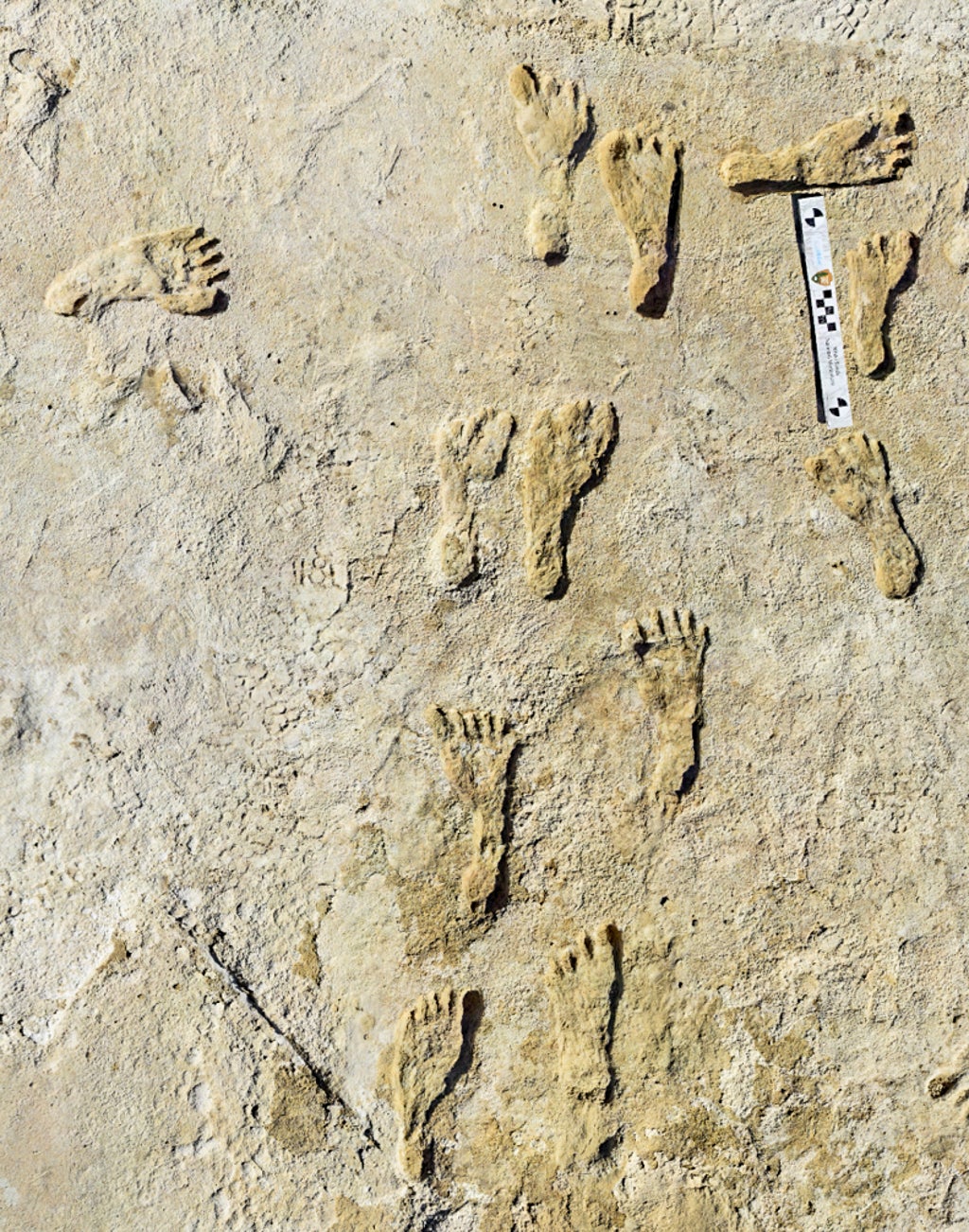
A PBS show titled Ice Age Footprints will explore a series of fossilised footprints in White Sands National Park in southern New Mexico — including footprints scientists believe belonged to a human adult and a child as they walked together along what was then a lake.
The show, which premieres on 25 May, follows a group of scientists as they endevour to identify and date a number of footprints in the area from both humans and animals alike — including giant sloths, mammoths, and the long since extinct American lion.
White Sands, an expanse of nearly 150,000 acres, is one of the country’s newest national parks. It was established as a national park in December of 2019 long after first being recognised as a national landmark back in 1933. It is a frequent filiming location for Hollywood, and, crucially for scientists, is home to the oldest known human footprints on the continent.
The US Geological Survey has estimated that the oldest footprints found at the site are as many as 23,000 years old.
The findings at White Sands have shed new light on the timing of humanity’s arrival in North America — suggesting that humans were living in substantial numbers on the continent far earlier than had previously been thought. Recent consensus had dated the arrival of humans in North America at around 16,000 to 17,000 years ago.
At the time, White Sands was home to a massive body of water called Lake Otero. The mud of the lake helped preserve footprints, which, in this one extraordinary case, appear to show a young person walking a long distance with a child on the lakeshore.
“You have an individual walking along and then that individual stops,” Indigenous archaeologist Joe Watkins, a member of the Choctaw Nation, told Newsweek. “And then a set of child’s footprints appear next to that individual, then the child’s footprints disappear, and the individual starts walking again. And then the child’s footprints appear on the other side of that individual.”







